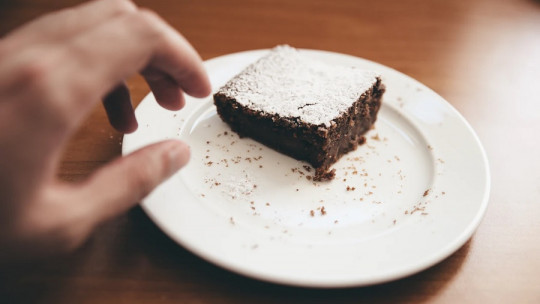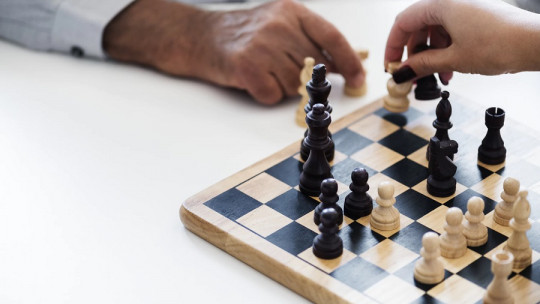
Impulse reduction theory is a model that became popular in the middle of the last century and was conceptualized by Clark Hull to explain how behavior, learning and motivation were related.
According to this theory, what encourages us to repeat a behavior, that is, learning, is how effective it is in reducing an internal need such as thirst or hunger. The foundation of this theory is that reduction of impulses is the main force behind motivation.
Although this theory is somewhat outdated today, it does have the merit of having conceptualized behavior in very concrete and mathematical terms, which served as a model for other later theories. Let’s look at it further.
What is impulse reduction theory?
The impulse reduction theory is a theory of motivation originally put forward by Clark Hull in 1943 and later developed by his collaborator Kenneth Spence This model holds that drive reduction is the primary force behind an organism’s motivation, learning, and behavior and would become the primary motivational model of the 1940s and 1950s.
An impulse or “drive” is defined in this theory as motivation that arises due to a psychological or physiological need that must be satisfied to recover an optimal state for the organism It works as an internal stimulus that motivates the individual to activate to satisfy the need that has caused that impulse, reducing it. We would have primary drives that are innate, such as thirst, hunger and sex, and secondary drives, which would be learned through conditioning.
Hull was one of the first theorists to try to create a grand theory that would explain all behavior He began developing the theory shortly after starting work at Yale University, drawing inspiration from a wide number of great thinkers in the behavioral and biological sciences such as Charles Darwin, Ivan Pavlov, John B. Watson and Edward L. Thorndike. .
The theory of impulse reduction was developed as a hypothetico-deductive system in psychology, which consisted of the postulation of participating variables, that is, very precisely defined terms that could be used using mathematical symbols to represent them. So Hull tried to develop a system as scientific as that present in any natural or formal science an idea taken after reading Isaac Newton and the Greek mathematician Euclid.
Hull was also influenced by the work of Ivan Pavlov, especially taking the principles of conditioning, and from Thorndike he took the idea of the law of effect. In fact, it is from these two great theoretical contributions to behavioral sciences that Hull tries to integrate a new system by creating his theory of impulse reduction.
Homeostasis and learning
Clark Hull based his theory on the concept of homeostasis, that is, the idea that an organism actively works to maintain internal balance For example, our body constantly regulates its temperature to avoid being too cold or too hot and thus be able to carry out its organic functions properly. Hull thought that behavior was one of the many ways the body had to maintain its balance, only in a more visible way.
Based on this idea, Hull suggested that motivation, that is, moving to do something, is the result of biological needs. In his theory, Hull used the term “drive” or “impulse” to refer to the state of tension or activation caused by physiological and biological needs. These needs, such as thirst, hunger or seeking warmth, drive us to do something. As we are in an unpleasant state, being in tension, our body is motivated to resolve a need or reduce it.
With the intention of returning to a pleasant state, humans and also animals look for all kinds of ways to satisfy these biological needs. For example, if we are thirsty we look for something to drink, if we are hungry we look for food and if we are cold we put on more clothes. According to Hull, If the behavior performed works to reduce that impulse, that behavior will be repeated in the future in case the same need arises.
Conditioning and reinforcement
Although Clark Hull is considered a scientist belonging to the neobehaviorist movement, he agrees with the majority of behaviorists when it comes to considering that human behavior can be explained in terms of conditioning and reinforcement. Based on what he himself proposes with his theory, the reduction of impulses acts as a reinforcer of a certain behavior.
The establishment of a new behavior that reduces impulses respects the classic stimulus-response relationship that is, when a stimulus and a response are followed by the reduction of the need, this increases the probability that the same stimulus, if it appears in the future, will generate the same response.
This reinforcement increases the probability that the same behavior will occur again in the future if the same need arises. This makes sense since, for an organism to survive in nature, it must carry out behaviors that effectively resolve the needs that may arise, learn them and do them again in case the need arises again, since failure to do so runs the risk of not recovering homeostasis and therefore putting oneself in danger.
We can understand that an organism is in danger either as facing a serious and potential danger (e.g., dying of starvation) or simply feeling a need that causes displeasure the longer it goes unresolved (e.g., moderate thirst). Entering a state of need means that the requirements for survival are not being met. In order to satisfy them, the body behaves in a way that focuses on reducing that need
Deductive mathematical theory of behavior
As we mentioned, Clark Hull proposed a hypothetico-deductive system to explain behavior, with the intention of developing a system as scientific as that of other sciences such as mathematics and physics. His goal was to develop a theory of learning that could be expressed in mathematical terms and for this he presented a formula:
sEr = V x D x K x J x sHr – sIr – Ir – sOr – sLr
Where:
In Hull’s paradigm there are three essential elements in any other behavioral theory E, this is stimulus, O which is organism and R which is response, the paradigm being E – O – R. O is affected by E and determines R. When trying to explain the functioning of the organism, to which we do not have internal access Since it can only be represented as a black box model, if we know what stimuli have entered (input) and what responses the organism has issued (output), taking into account the previous formula the behavior and learning of O can be explained.
Criticisms of the theory
The theory of impulse reduction was very popular in the middle of the 20th century, however today it is a bit forgotten and the reasons behind it are numerous. Among these we find the exaggerated emphasis on quantifying all behavioral variables, despite not being possible to know everything that influences human behavior, in addition to the fact that the theory lacked generalizability. Likewise, it should be said that Hull’s interest in using experimental techniques to address human behavior has had a great impact and influence on later motivational theories.
However, the main problem with this theory is that cannot explain the importance of secondary reinforcers in reducing impulses Unlike primary “drives,” such as thirst or hunger, secondary drives do not intervene directly in the satisfaction of biological needs. An example of this is money, an element that does not quench hunger or thirst directly but does allow us to obtain reinforcing food and drink that does reduce impulses directly. The need to obtain money acts as a powerful source of reinforcers of basic needs.
Another criticism of the model is that the impulse reduction theory It does not explain how people, despite being satiated and finding homeostasis, sometimes do not reduce their behavioral impulses For example, on many occasions, after having eaten and having satisfied our hunger, we continue to eat more and more, which would be an unnecessary behavior since the function of eating is to reduce the need for hunger.
Finally there is the fact that Many people seek tension voluntarily, that is, breaking their homeostasis Skydiving, bungee jumping or scuba diving at great depths are behaviors that lead us to be in tension, just the opposite of homeostasis and make our need to be protected and calm very unsatisfied. The theory cannot explain why people commit this type of behavior that is so contrary to what is instinctive.
Although all this has contributed to the fact that Clark Hull’s theory of impulse reduction is not very current today, it is true that it has helped to promote research in psychology from a more scientific perspective, in addition to being the seed for the development of other theories about human behavior that came later. For example, many motivation theories that emerged during the 1950s and 1960s are based on Hull’s theory or had some influence received from it, such as Maslow’s pyramid, which emerged as an alternative to Hull model.








